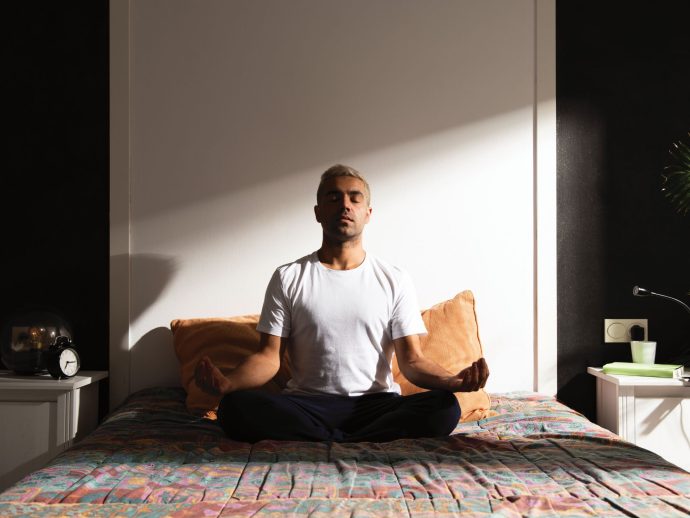
When struggling with pain, it can be extraordinarily difficult to sleep, yet sleep is the very thing that heals or eases pain. While pharmaceutical interventions are often prescribed, breathwork, meditation, and understanding pain can also bring relief and rest.
Painful nights
Physical pain can hinder finding a restful sleep position. Pain during the day, along with restrictions on movement and exercise, can impact sleep quality. This creates a cycle: disrupted sleep at night and reduced activity during the day, which further worsens sleep and pain sensitivity.
Whether from injury, headaches, arthritis, or chronic conditions, this cycle can make restful sleep impossible, increasing fatigue and pain sensitivity.
Beginning with the basics
Pain is the body’s way of recognizing harm or damage. It’s a feedback loop providing sensory information on tissue health, experienced as fast, reflexive, or slow, chronic sensations. Pain is felt through sensory nerves that report across muscles, bones, organs, and vessels, relayed via pathways to the brain.
Further foundations
Sleep is a vital rhythm for health, necessary for digestion, circulation, menstruation, and respiration. Each core process depends on sleep, and pain can disrupt these cycles.
Putting things together
Pain interferes with sleep by making core processes more difficult. When in pain, the body releases chemicals associated with the fight-or-flight response, which counteracts the calm needed for deep sleep. This stress cycle worsens sleep quality, increases pain, and hampers healing, creating a vicious cycle with added stress on the body.
Bringing in breath
While many products aim to improve sleep, breathwork offers a simple, effective approach. Breathwork involves consciously engaging with breathing to alter feelings, reduce pain, manage chronic symptoms, and combat sleep issues.
Breath is an ancient, powerful medicine. Practices focusing on breath awareness and control can significantly impact stress, pain, and sleep quality.
Five stories
Breathwork changes breathing patterns and posture, influencing the body’s pressure distribution. The body has multiple diaphragms, including the pelvic floor, which work together. Proper movement of these diaphragms maintains nervous system balance and supports restful sleep. When diaphragms stop functioning rhythmically, tension builds, making quality sleep difficult.
Diaphragmatic breathing
Deep, intentional diaphragmatic breathing slows the heart rate, stabilizes blood pressure, reduces cortisol, and activates the vagus nerve. It can support symptoms of chronic pain, irritable bowel syndrome, anxiety, and sleep disorders.
Daily activities, like washing dishes or walking, can be turned into mindful breathing exercises. Paying attention to how you breathe during routine tasks encourages slower, more aware breathing, promoting relaxation.
A sigh of relief
Focusing on and mobilizing diaphragms through attentive breathing helps sense internal states, reducing pain and stress, and improving sleep. Developing awareness of these internal processes can foster better rest and pain management.
By Deena Kara Shaffer, PhD

